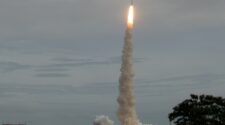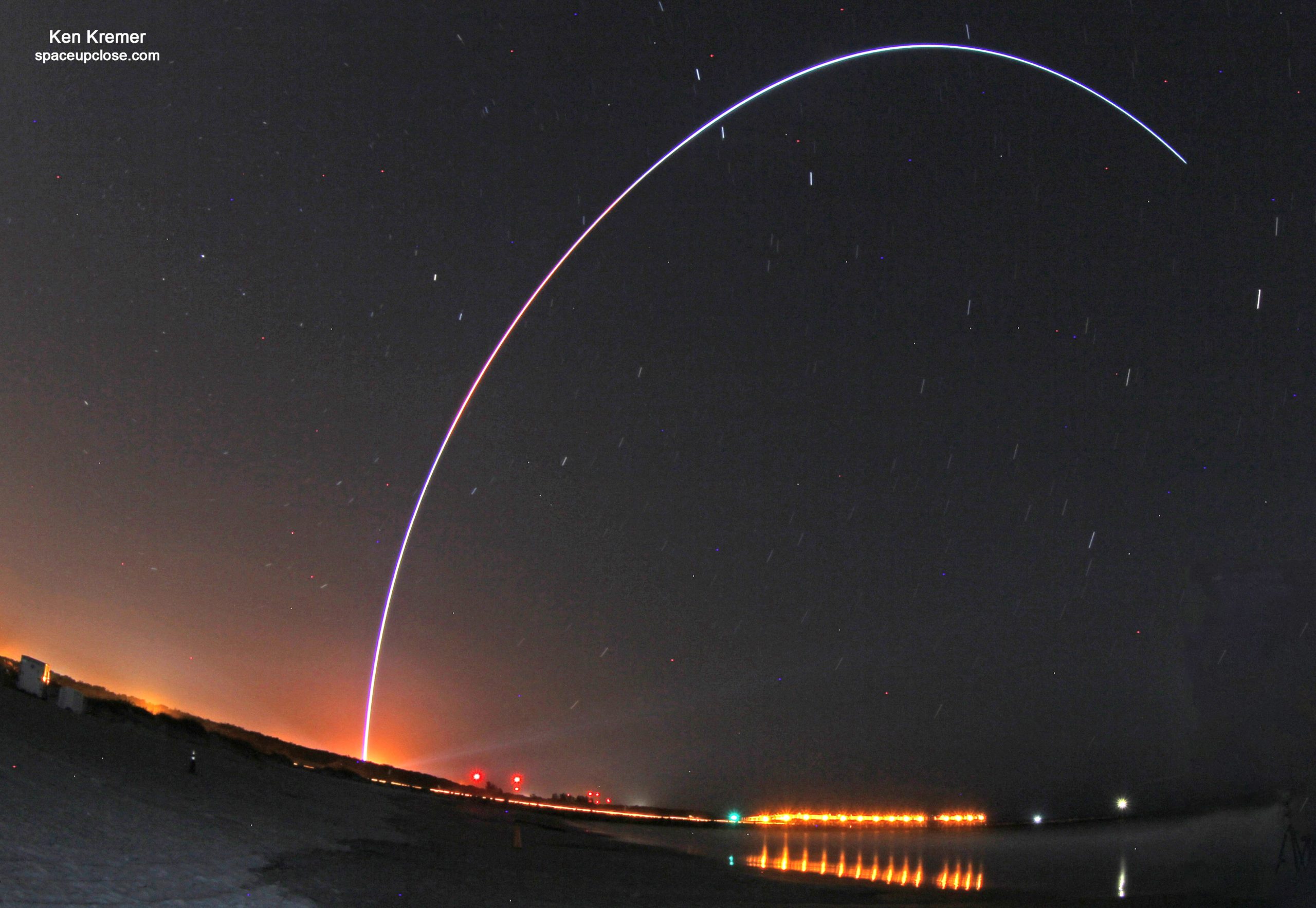
The third time was finally the charm and Relativity Space finally achieved their dreams and launched their Terran 1 rocket to space on the first-ever flight of a 3D printed rocket, late Wednesday evening, Mar. 22, from Florida’s Spaceport. The first stage performed well and survived the withering aerodynamic stresses at Max-Q through stage separation, however, the rocket failed to achieve orbit when the second stage engine sputtered due to an anomaly and did not properly ignite.
With no thrust available to continue flying upwards to break the bonds of gravity the upper stage fell back to Earth a few minutes later and crashed into the Atlantic Ocean thereby breaking apart into many debris fragments – thus concluding the history-making Terran 1 test flight.
It also counts as the first methane-fueled rocket to launch from the Space Coast. Others, like the ULA Vulcan, are slated to follow in its footsteps.
Liftoff of Terran 1 took place under clear skies at 11:25 p.m. ET (0325 GMT), on March 22 from Space Launch Complex-16 on Cape Canaveral Space Force Station, Florida, halfway into the 3-hour launch window which ran from 10 p.m. to 1 a.m.
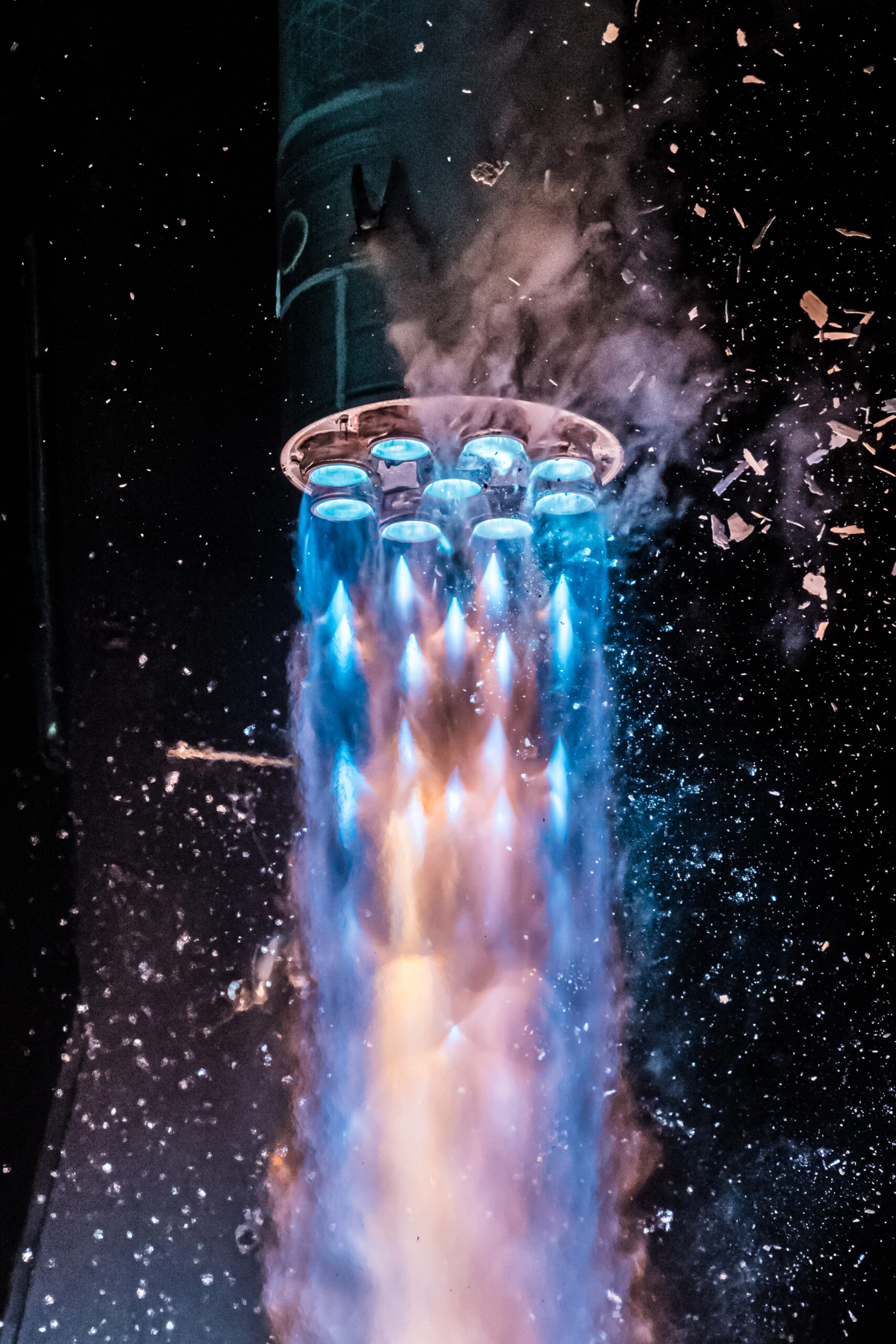
It was unlike any launch previously seen with spectacular looking purple blue exhaust flames from the methane fuel spewing from the nine Aeon-1 first-stage engines.
Once stage separation occurred, nearly three minutes after liftoff, no more flames were visibly being emitted from the rocket as the upper stage engine had failed to ignite properly.
Terran 1 reached a maximum altitude of about 130 km (81 mi) and reached a top speed of about 4,600 mph (7,400 kilometers per hour) before the webcast cut off.
It flew nearly vertical and arced over for stage separation and then only a few miles offshore.
“Maiden launches are always exciting, and today’s flight was no exception,” said Arwa Tizani Kelly, Relativity Space’s technical program manager for test and launch, during their webcast.
“Although we didn’t reach orbit, we significantly exceeded our key objectives for this first launch, and that objective was to gather data at Max-Q, one of the most demanding phases of flight, and achieve stage separation. Today’s flight data will be invaluable to our team as we look to further improve our rockets, including Terran R.”
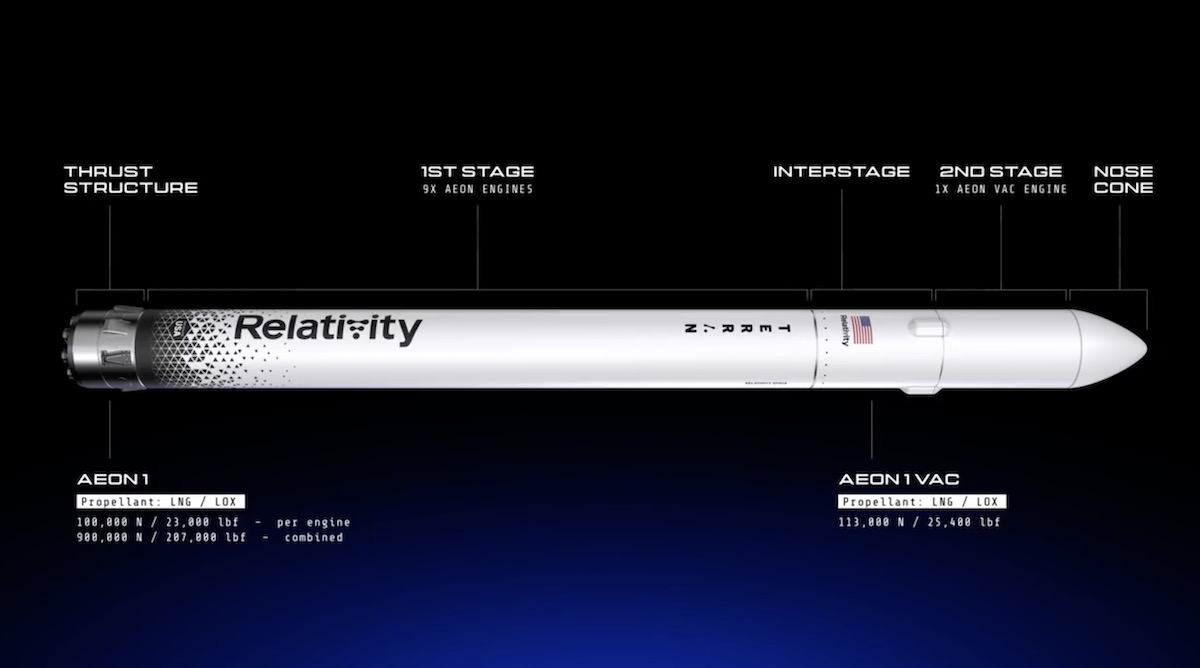
The $12 million test rocket was nicknamed “Good luck, have fun” or GLHF. The two-stage rocket stood 110-foot-tall (33.5-meter) with a 7.5 ft diameter.
The rocket can deliver up to 2750 pounds (1,250 kilograms) of payload to a low-altitude orbit, however, no payload was aboard for this maiden orbital launch attempt.
The first stage is powered by nine 3D printed Aeon 1 engines generating about 207,000 pounds of thrust at liftoff. A single Aeon 1 Vac engine powers the second stage.
“Like its structure, all Relativity engines are entirely 3D printed, and use liquid oxygen (LOX) and liquid natural gas (LNG), which are not only the best for rocket propulsion, but also for reusability, and the easiest to eventually transition to methane on Mars.”
This inaugural Terran 1 rocket is about 85% 3D printed and Relativity Space hopes to increase that to about 95% in the future.
The advantages of 3D printing are that the rocket has far fewer moving parts and reliability should be significantly improved – with the goal of vastly reducing the cost of access to space.
In the future, the hope is that 3D printed rockets could be manufactured directly and more easily on the Moon and Mars thereby slashing production costs.
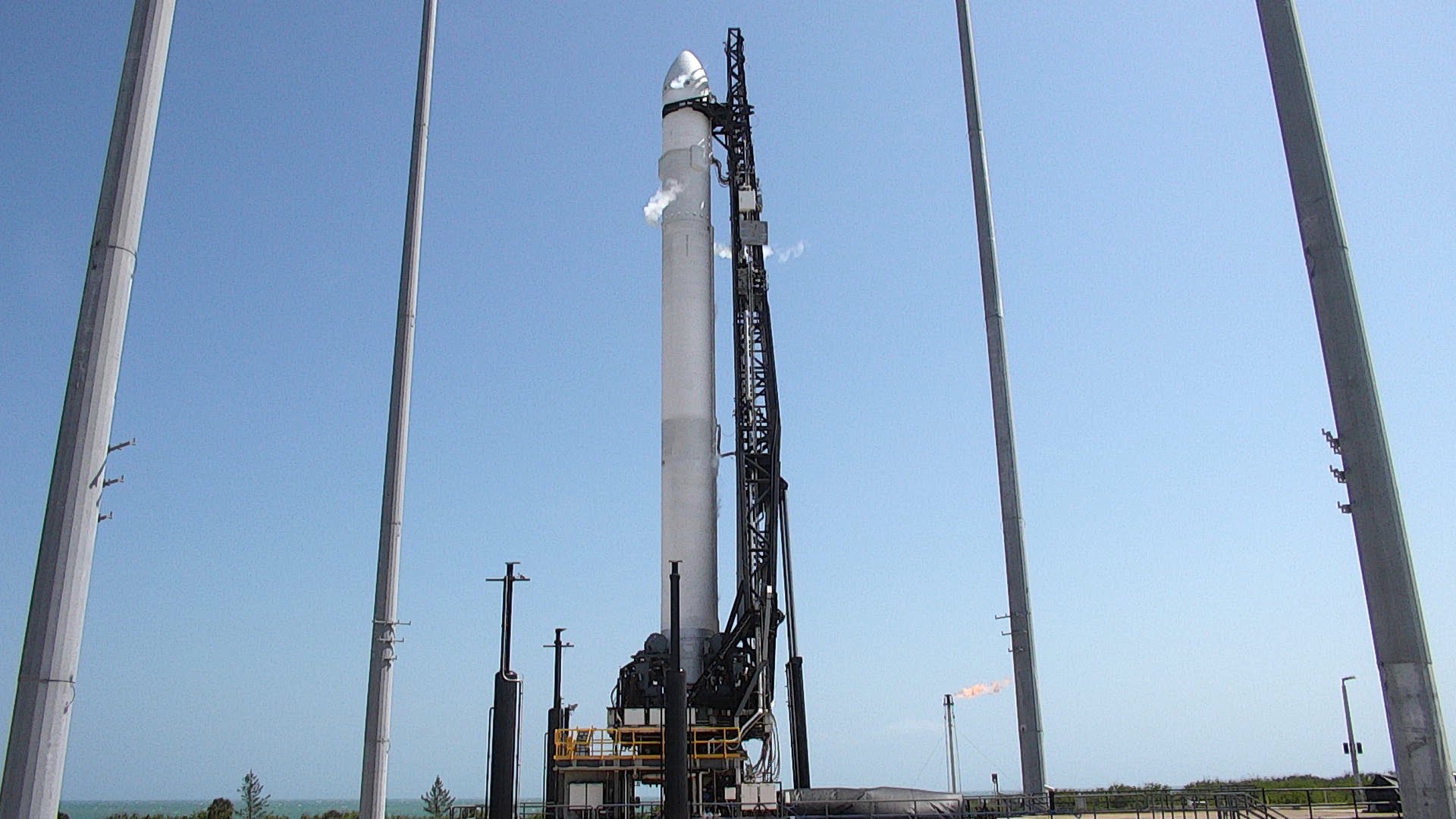
The launch was delayed nearly 90 minutes into the window by a combination of powerful upper-level winds, and the recurrence of another episode of a totally irresponsible boater who intruded into the keep-out zone despite numerous issued warnings – and who was then escorted out of the hazard exclusion zone by the U.S. Coast Guard and back into Port Canaveral before the rocket could soar away.
The first two launch attempts during the afternoon daylight window from 1 to 4 p.m. ET were scrubbed on March 8 and 11 due to a series of technical issues involving the propellent loading temperature and pressure, and issues with the stage separation software – as well as another boater entering the exclusion zone and upper altitude winds.
The Terran 1 test flight achieved many goals set by Relativity Space and served as a proof of concept for 3D rocket printing technology – and thus can be rated partly successful.
It represents real progress with the best yet to come.
“Today’s launch proved Relativity’s 3D-printed rocket technologies that will enable our next vehicle, Terran R. We successfully made it through Max-Q, the highest stress state on our printed structures. This is the biggest proof point for our novel additive manufacturing approach,” Relativity tweeted after the launch.
“Today is a huge win, with many historic firsts. We also progressed through Main Engine Cutoff and Stage Separation. We will assess flight data and provide public updates over the coming days.”
Today’s launch proved Relativity’s 3D-printed rocket technologies that will enable our next vehicle, Terran R. We successfully made it through Max-Q, the highest stress state on our printed structures. This is the biggest proof point for our novel additive manufacturing approach.… pic.twitter.com/9iaFVwYoqe
— Relativity Space (@relativityspace) March 23, 2023
Overall the Terran 1 mission was a major step forward for Relativity Space. Teams will now fully investigate what caused the anomaly with the upper stage that caused it to fail to ignite.
https://twitter.com/thetimellis/status/1638985593580408841
Terran 1 counts as the world’s first almost entirely 3D printed rocket to launch and also is the first rocket to launch fueled by the liquid methane and liquid oxygen propellant combination – known also as methalox.
Terran 1 survived the period of Max-Q at 1 minute and 20 seconds into flight a primary goal – where it experiences the maximum aerodynamic pressures and temperature stresses of launch thus validating the 3D technology design and structural composition of the booster casing and the Aeon-1 engines.
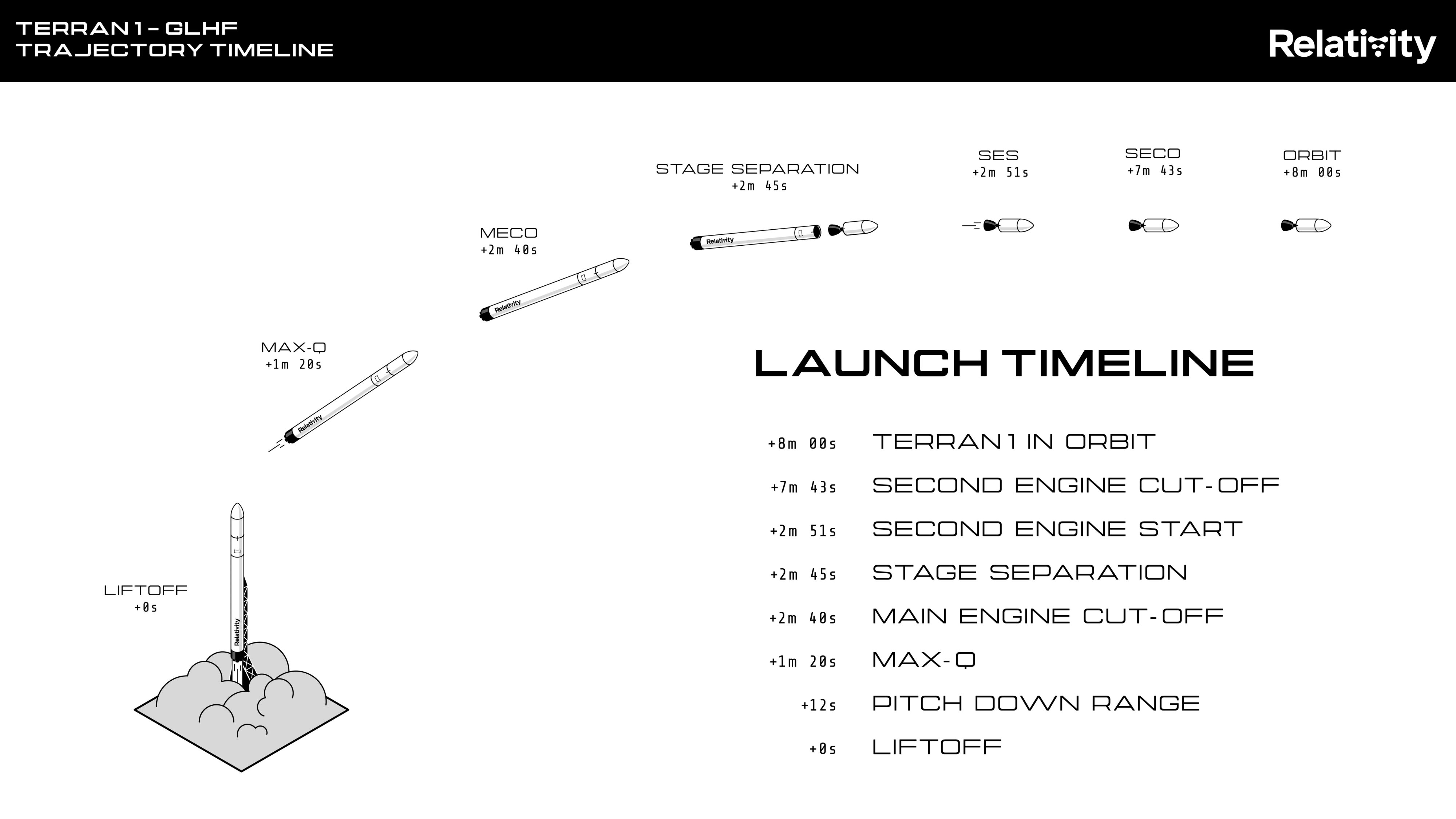
The first stage fired as planned for 2 minutes and 40 seconds, reaching an altitude of about 70 km to that point.
The stages separated as planned five seconds later as seen in the Relativity Space live webcast.
Unfortunately, the second stage did not ignite as planned at 2 minutes 53 seconds into flight. It should have fired for about five minutes, placing the Terran 1 upper stage into orbit eight minutes after liftoff.
The next Terran rocket is already in production and could launch later this year once the investigation has determined the root cause, and the company has taken steps to fix the problem and implement any necessary changes to help ensure full success on the next attempt.


